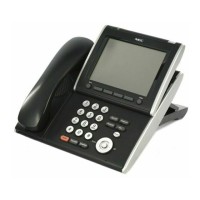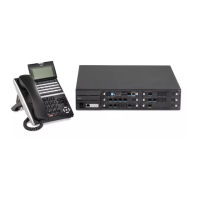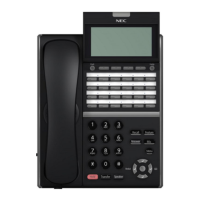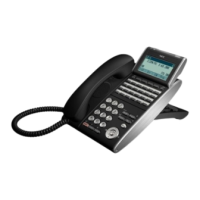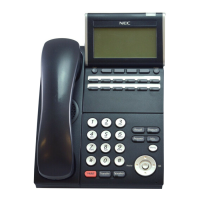971
Guide to Feature Programming
Basic Trunk Data Setup – Trunk Name
Set the names for trunks. The trunk name
displays on a multiline terminal for incoming
and outgoing calls.
Maximum of 12 characters.
Line 001
Line 002
Line 003
:
Line 400
Basic Trunk Data Setup – Transmit Level
Set these options for compatibility with the
connected PBX.
Trunks 1 ~ 400
1 ~ 57
(-15.5 ~ +12.5dB in 0.5dB
intervals)
Basic Trunk Data Setup – Toll Restriction
For each PBX trunk port, Enable/ Disable Toll
Restriction.
0 = Restriction Disabled (No)
1 = Restriction Enabled (Yes)
Analog Trunk Data Setup – Signaling Type
(DP/DTMF)
At default, Program 14-02-01 is set to 2
(DTMF).
0 = Dial Pulse (10 PPS)
1 = Dial Pulse (20 PPS)
2 = DTMF
Analog Trunk Data Setup – Ring Detect Type
Set Extended Ring Detect or Immediate Ring
Detect for the trunk. For T1 loop/ground start
trunks, this option must be set to 1 for the
trunks to ring and light correctly.
Trunks 1 ~ 400
0 = Normal/delayed
1 = Immediate Ringing
Behind PBX Setup
For each PBX trunk port, enter 1. Make a
separate entry for each Night Service mode.
0 = Stand Alone (Trunk)
1 = Behind PBX (PBX)
2 = Not Used
3 = CTX assume 9
Toll Restriction Class for Extensions
Assign a Toll Restriction Class (1 ~ 15) to each
extension.
Day/Night Mode
1 ~ 9 (9 = Power Failure Mode)
Restriction Class 1 ~ 15
Toll Restriction Class – PBX Call Restriction
For each Toll Restriction Class, enter 1 to
restrict calls on the PBX trunk to outside calls
only. Enter 0 to allow users to dial PBX
extensions.
0 = Disable (No)
1 = Enable (Yes)
Toll Restriction Table Data Setup – PBX
Access Code
Enter the system PBX access codes. The
system can have up to four codes. A code can
have one or two digits. Valid entries are 0 ~ 9,
# and *. Use Line Key 1 as a don’t care digit. If
using Account Codes, do not use the * in the
PBX Access Code.
Dial (maximum of two digits)
Dial (Up to two
digits)
default:
Table 1 ~ 4 = No
Setting
Operation
To place a call over a PBX trunk:
1.
At multiline terminal, press Speaker and dial 804.
-
OR -
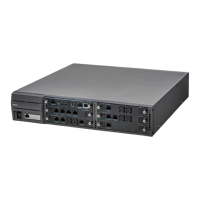
